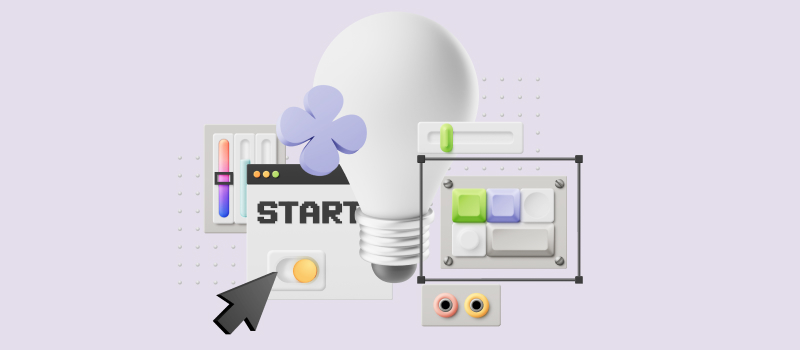
Time tracking tools are normally used to get accurate data for billing, accounting, payroll, and performance analysis. However, there are more ways to use your timekeeping data in work processes. You can use them to keep track of project KPIs – besides getting more value out of existing data, it also allows to optimize time spent on KPI tracking.
As a part of its project and work management functionality, actiTIME has a robust reporting module that offers managers a fast and effortless way to keep track of important project KPIs. In this article, you’ll find advice on how you can use actiTIME reports and charts to calculate KPI values, and some insights how to use timekeeping data for analysis of project progress and outcome.
Time Spent on Project Work
This is one of the basic KPIs that provide a general idea on project parameters. This KPI shows the amount of time spent on the entire project scope. It can be summarized to show the data of the entire team, or represented by individual team members.
Time spent on project work is used for planning identical projects and parts of work, assessing time resources required for new projects, and analyzing progress dynamics of different projects.
To track this KPI in actiTIME, run Time-Track in Detail or Staff Performance report, and group the data by specific project. You can run the report by the entire staff or by any specific team. If necessary, break down the project time by individual tasks and see which assignments are the most time-consuming.
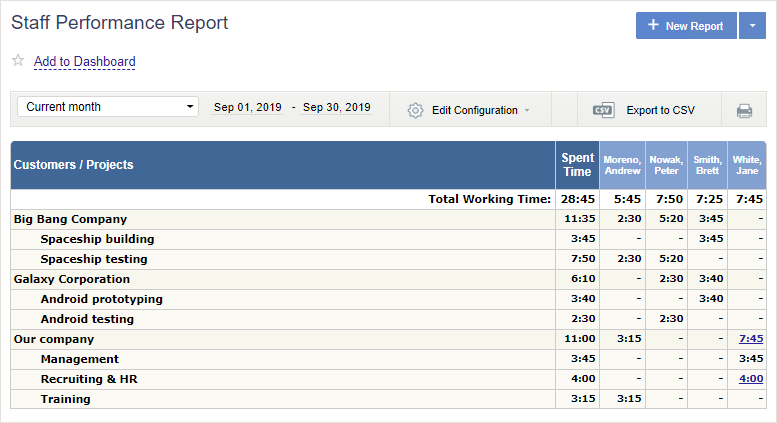
Estimated vs. Actual Hours
Accuracy of work planning is key for successful delivery of the project. This KPI allows managers to assess how accurate their estimates were: it compares hours planned for specific tasks and actually spent on them. Tracking this indicator helps better estimate identical tasks in different projects. What’s more, it is essential for improving estimation technique and understanding accuracy progress.
actiTIME has special report for keeping track of this KPI: Estimated vs. Actual Time report. Run it for your project to see how accurate the estimates were, and compare reports for different periods to understand and analyze the progress of your estimation technique.
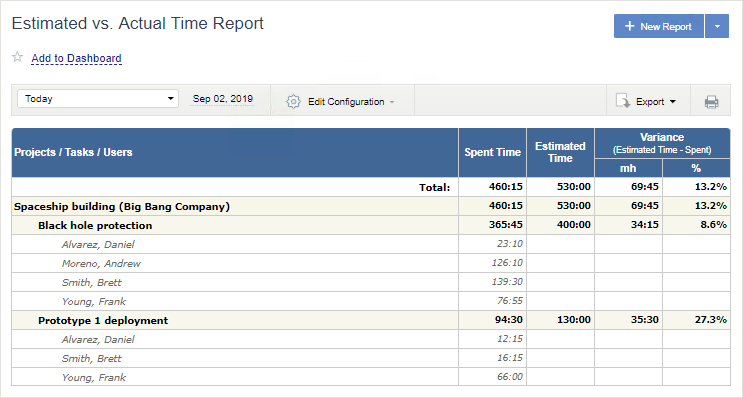
Cycle Time
Cycle time KPI shows how much time is required to perform specific task or assignment. It is calculated upon completion of a task. This KPI can be used for planning time necessary for completing typical tasks within new projects and preparing estimates for recurring activities.
In actiTIME, you can keep track of cycle time for your projects’ tasks with Billing Summary report. In it, select your project, adjust the date range when project works have been completed, and choose the option to count time reported for tasks completed within your specific date range. You can set up the report to only show the time data, without billable amounts – this option is also available in the report settings.
What’s more, the report shows time breakdown by specific types of work.
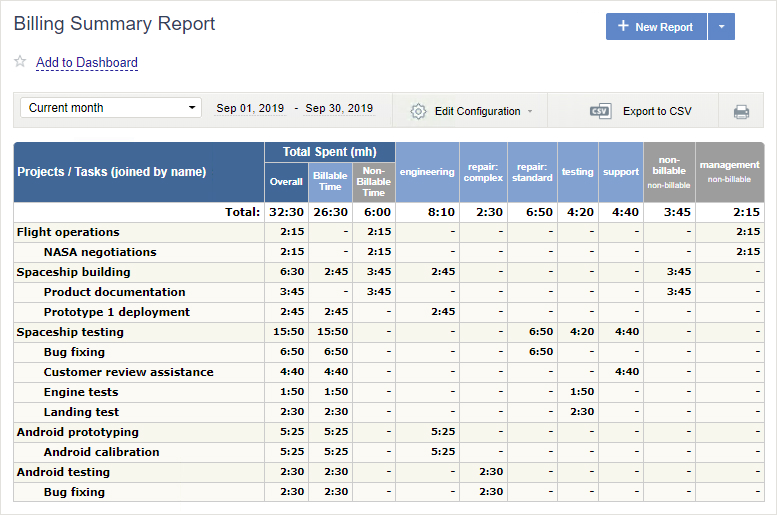
Profitability
Ensuring profitability of a project is one of the crucial project management tasks. Keeping track of how profitable the project is helps understand how project costs build up, where they can be reduced, and what affects the resulting profitability. Tracking this KPI during project progress also helps adjust budget as necessary and see where work can be optimized to achieve a better result.
In actiTIME, you can track project profitability by running Profit / Loss report. In it, you can see all necessary details on billing rates for project works, amounts payable to employees for works performed within the project, leave time costs, and overtime addition. Report configuration options allow to set up the report to show necessary details and hide those that you don’t need to keep track of.
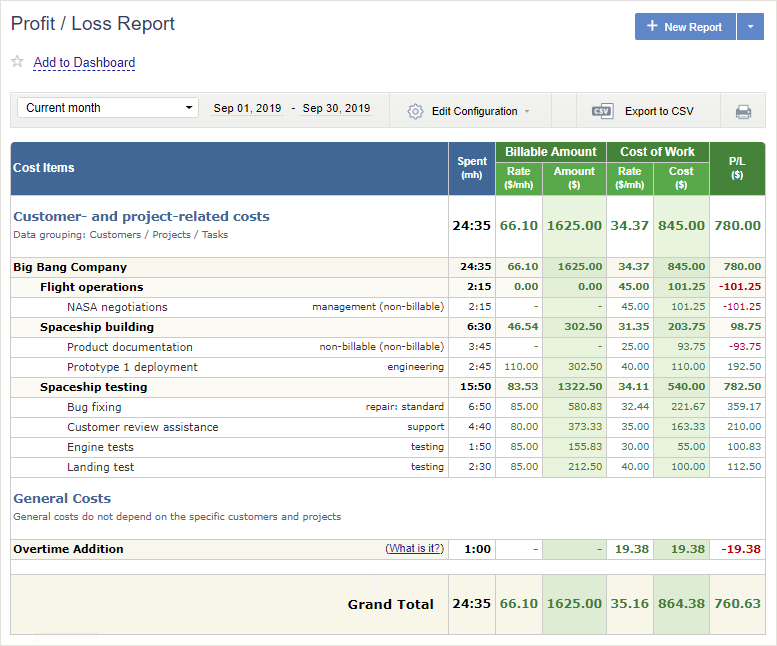
Cost of Management Processes
Management activities build up a significant share of all project works, and they are one of the costliest ones. So it’s not surprising that they affect the total project cost. That’s why monitoring this KPI is essential for analyzing project costs and ways to optimize them. It also provides insights into the efficiency of management works and allows managers to see how they can modify their work processes to achieve more efficiency.
actiTIME allows managers to show cost of management activities on a visual and informative chart. To prepare it, use the “Create Chart” option in the Reports section. Set the chart up to show costs of work by types of work, and see the proportion of management works in the total amount.
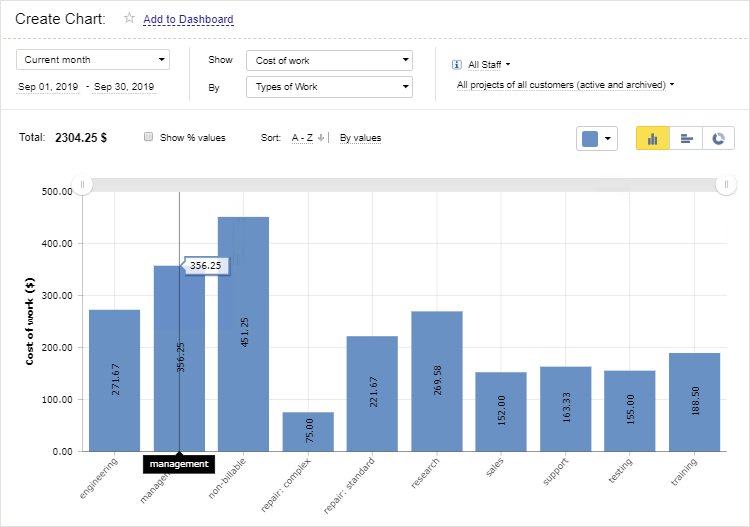
Revenue Per Employee
Annual, monthly, quarterly etc. revenue per employee shows the efficiency of team members’ work in terms of profit. This KPI is usually tracked in consultancy, advertising, personal assistants’ services and other fields where billable amounts can be associated with specific employees and it is reasonable to track revenue with reference to individual specialists.
In actiTIME, you can run Billing Summary report with data breakdown by specific users to monitor this KPI. It will show billable amounts for works performed by each employee, and break down the data by types of work. Comparing time spent on project assignments and amounts billable for them helps get better understanding of team members’ work profitability.
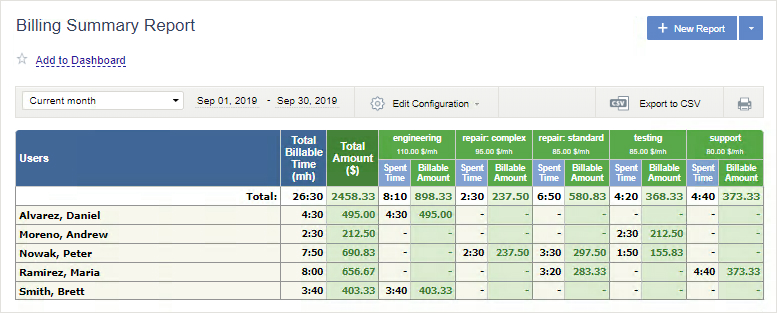
Summary
If your team is using a timekeeping and work management tool for keeping track of their work, you have valuable data at hand that can help you track main KPIs of your project. Run built-in reports to analyze intermediate results of your team members’ work and evaluate the final outcome. Generating reports for different work periods allows you to reveal important dynamics of KPIs you’re tracking, and take measures to improve the results.














































